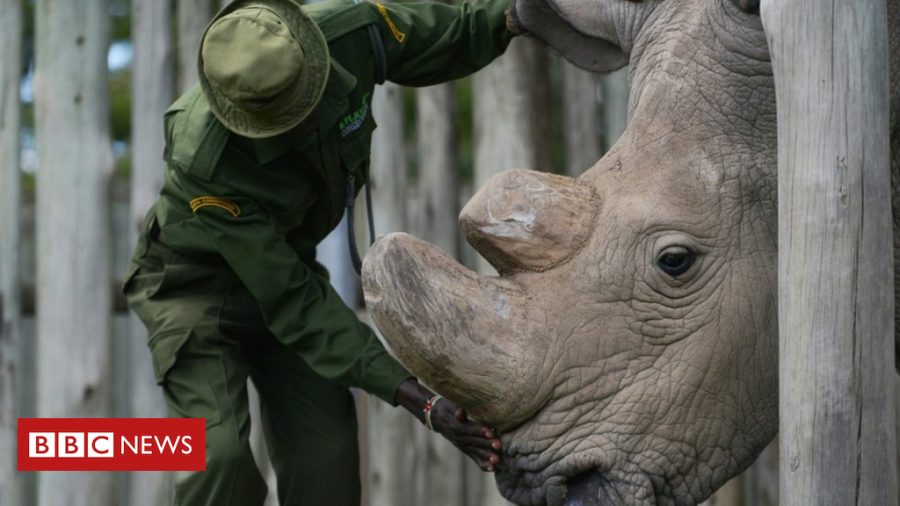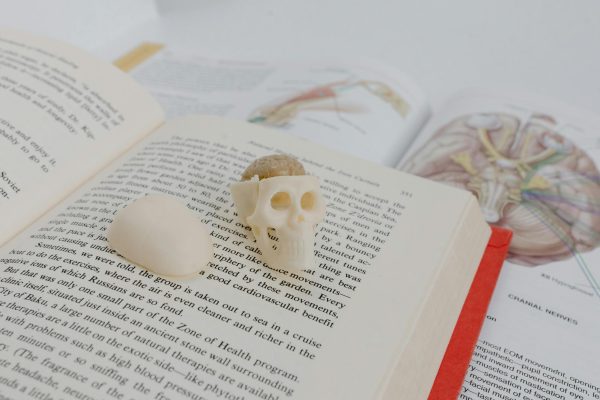Last-Known Male Northern White Rhino Dies
This past Monday, the last known male northern white rhinoceros passed away. As the world mourns the possible end to a species, scientists look to possible technological developments that may save these rhinos from extinction.
The rhino, named Sudan, had been suffering from age-related health deterioration. He had muscle and bone deterioration, as well as a severe leg infection that made it so that he couldn’t stand or walk for his last 24 hours. After plenty of discussion, his veterinary team decided that it would be best for Sudan if they put him down. He was 45 years old.
Sudan was found in Sudan in 1975, when he was two years old. He was immediately taken to Dvůr Králové Zoo in the Czech Republic, where he lived with a few other northern white rhinos until 2009, when the zoo suffered from financial issues. Sudan and the other rhinos were moved to the Ol Pejeta Conservancy in Laikipia County, Kenya.
Joseph Taida, who had been working with Sudan since 2012, told NPR reporters that Sudan was a gentle and affectionate rhino. He watched Sudan begin to behave like a rhino would in the wild; he saw him grazing, sharpening his horn on tree trunks, and rolling in mud. Taida also told reporters that Sudan loved visitors; “Whenever he hears people talking, he loves to come close, because he knows he’s gonna be scratched.”
Rhinoceros’ are the second largest land mammals in the world, the largest being elephants. There are 5 species of rhino, one of them being the white rhino, and there are two subspecies within the white rhino; northern white rhinos and southern white rhinos. Northern white rhinos, which used to be found in Uganda, Chad, the Central African Republic, southwestern Sudan, and the Democratic Republic of the Congo, were hunted by poachers for their horns. Their horns were typically used for a certain kind of herbal medicine in China, as well as dagger handles in Yemen. According to the WWF, the total population of northern white rhinos was around 2,000 in the 1960s. The WWF officially declared them extinct in the wild in 2008.
Dr Steve Ngulu, one of the veterinarians who worked closely with Sudan, told reporters that he sees his death as sad, shocking, and a true testament to human failure. Jan Skejstal, who worked with Sudan when he still lived at Dvůr Králové Zoo, strongly agrees with Ngulu. “His death is a cruel symbol of human disregard for nature and it saddened everyone who knew him,” he told AFP News agency. “But we should not give up.”
Despite living with two females of the same species, Sudan never reproduced with either of them, due to the fact that one is sterile and the other could not safely carry a calf to term. Scientists, however, aren’t quite ready to give up on the possibility of saving this incredible species of rhino.
Recently, scientists have been working to develop IVF technology for rhinos. IVF, or In Vitro Fertilization, is a fairly new development in reproductive sciences and technology. How it works is that if an egg is extracted from a uterus, it can be fertilized with a sperm sample. Once fertilized, the embryo is placed in a surrogate uterus to allow the embryo to grow for the gestation period.
Scientists already have sperm samples from male northern white rhinos. If they can find a way to extract the eggs from the two remaining females, fertilize them, and implant them into the uterus of a female southern white rhino, they believe there is a possibility to save the species.
“So, natural reproduction cannot take place, artificial insemination is not possible, so the only other option that we have to have a pure northern white rhino baby is to retrieve or to do something we call ovum pick-up, collect eggs from the females.” Dr. Ngulu told NPR reporters.
Scientists have been working on developing IVF technology for a while now, and Ol Pejeta would do whatever they could to raise funds for new developments. One such public stunt, involved creating a Tinder account for Sudan the rhino as a way to spread awareness of the struggles of the northern white rhinos, as well as raise money for IVF research. Despite all of Ol Pejeta and Sudan’s help, Rhino IVF technology is still an extremely new process and would cost around $10 million.
Despite the cost and the lack of development, scientists are not keen on giving up on this species of rhino. “We must take advantage of the unique situation in which cellular technologies are utilised for conservation of critically endangered species.” Skejstal told reporters. “It may sound unbelievable, but thanks to the newly developed techniques even Sudan could still have an offspring.”











